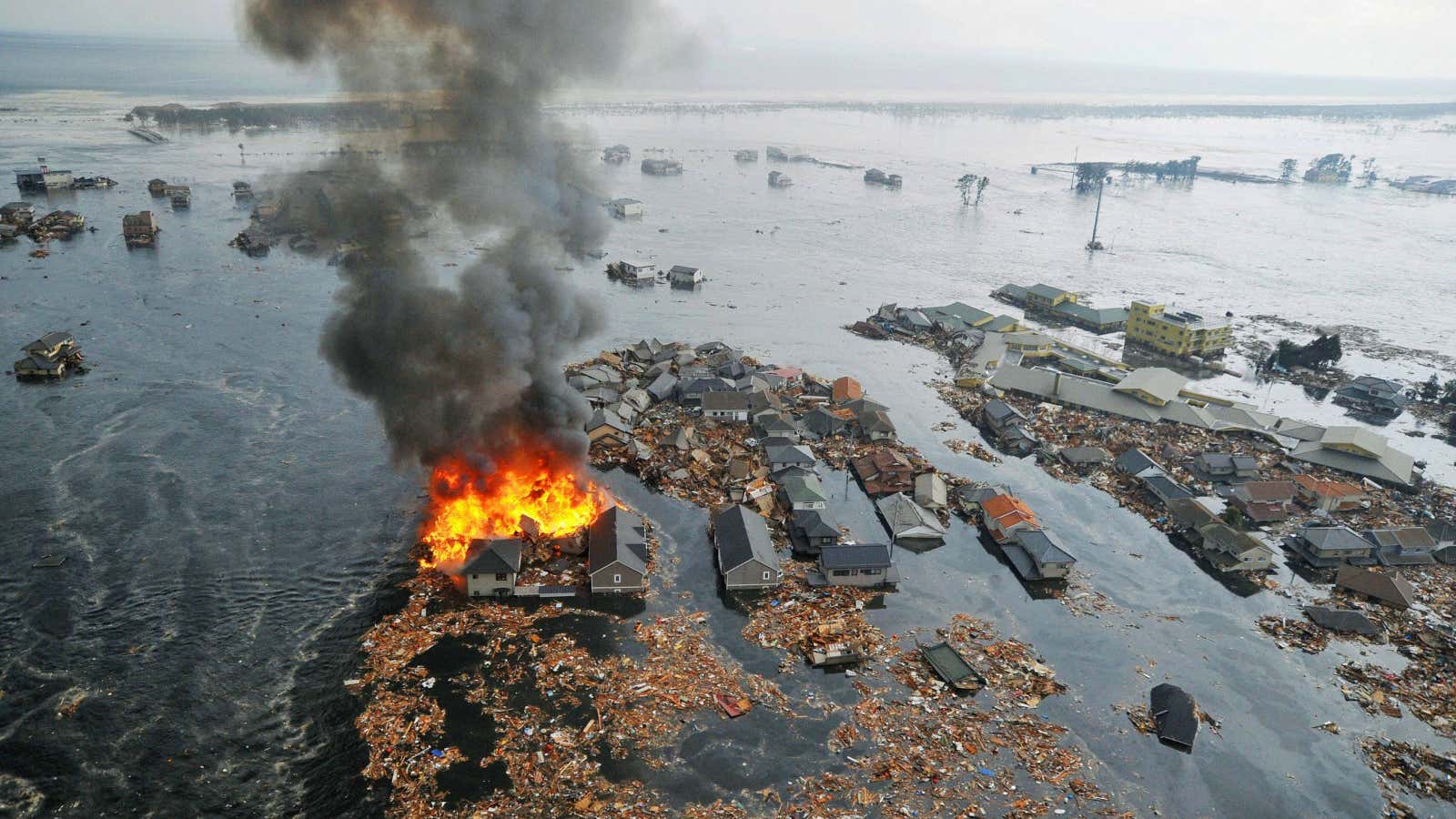The Disaster Recovery Institute International trains and certifies professionals who’ve dealt with nearly every major catastrophe of the past few decades. The nonprofit has certified more than 13,000 people from 100 plus countries, who, between them, have helped respond to 9/11, Hurricane Katrina, and the 2011 Japanese tsunami, among other calamities.
The institute also works with many small businesses, providing training not just on the response to major disasters, but to unexpected business turbulences, such as an unforeseen merger. In almost every case, says Chloe Demrovsky, the DRI’s executive director, the details are unique but the approach is the same: to focus on the effects, and not the cause, of the problem.
“We don’t spend a lot of time focusing on the causes, because any number of things could go wrong and it’s hard to predict what that will be. But the effects of these causes are actually fairly similar,” Demrovsky tells Quartz. “Nobody expected planes flying into skyscrapers on 9/11 but they were preparing for other types of attacks—maybe bomb threats or natural disasters, hurricanes or tornadoes or something more obvious. What we do, in order to take an action-based approach, is we focus on the effects.”
This framework helps both political leaders and chief executives move past the paralyzing stage of worrying about what could go wrong, so that they can focus instead on what has gone wrong, and how to best address it.
DRI divides the effects of disasters into key categories. There are facility problems, for example, where a company or a government can’t reach a facility—whether it’s because the bridge leading to a factory ha been destroyed, or because everyone is being kept indoors. In such a disaster, you’d need to focus on figuring out how to deliver services without access to such facilities.
Then there are operational problems—where a supplier has been destroyed, or a technical glitch has prevented a company or government from accessing needed information, or a key player (a CEO, a senior official) is incapacitated by health issues.
And finally there are organizational problem, where the chain of command goes awry.
These categories apply to both major events—the Japanese tsunami, for example, led to operational problems worldwide—and more mundane occurrences, such as a minor fire in 2000 at a chip-manufacturing plant that supplied to both Nokia and Ericsson. Though operations were expected to return to normal in a week, Nokia took early action to rectify the disturbance and flourished. Ericsson ended up suffering long-term effects, and struggled for years afterward.
Though Ericsson’s woes wouldn’t compare to the scale of devastation from major disasters, a company that’s adequately prepared to deal with business failings can be a huge asset to a government, and the public, in times of crisis.
“If the private sector is more prepared, good at working with the government, and can recover their own businesses faster, that can allow public sector resources to focus on the vulnerable who really need their help and attention,” says Demrovsky.
So in a natural-disaster scenario, if Walmart can stay open and keep its shelves stocked with groceries, the government doesn’t have to go into the business of feeding people.
Ultimately, there’s no single, clear-cut plan that can apply to every situation. But Demrovsky says that’s not the point anyway. Plans are forgotten, or go out of date quickly. Instead, it’s important to prioritize dealing with unforeseen events, and especially the effects of these events—because in both business and in life, the course rarely runs smooth, and it’s always best to prepare for the worst.




